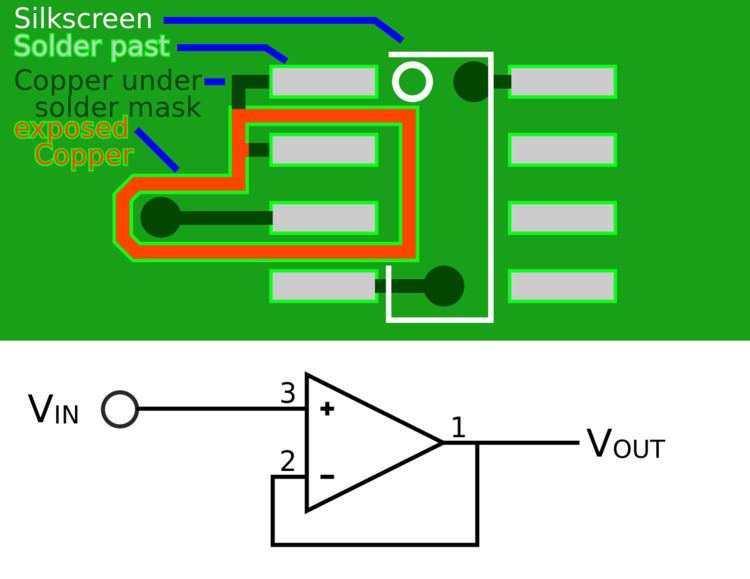 | ||
A driven shield is a method of electrical shielding used to protect low-current circuits against leakage current, a driven shield is often referred to as a driven guard, especially when applied to PCB traces.
Description
It is used in situations where the tiny leakage of current through the insulating surfaces of a wire or PCB trace would otherwise cause error in the measurements or functionality of the device. The basic principle is to protect the sensitive wire with a surrounding guard that is held at the same voltage as the wire, if they are at the same voltage then there will be no current flow. This is typically achieved using a voltage buffer/follower that matches the guard voltage to the wire voltage. The leakage from the shield to other circuit elements is of little concern as it is being sourced from the buffer which has a low output impedance.
The technique is used in situations such as ECGs and precision low-current measurement where leakage current would otherwise swamp or alter the measurement. Any situation in which the source to be measured has a very high output impedance is vulnerable to leakage current and if sufficient insulation is not practical then a driven shield will improve performance. Coaxial cable is well suited for use as a guard, if electromagnetic shielding is also required then triaxial cable should be used as depending on the type of buffer circuit any noise on the guard may be amplified in the output.
The limiting factor for this method is the input impedance of the voltage buffer, the JFET or CMOS op-amps typically used may have input impedances of many teraohms which is sufficient for most applications. Care must also be taken to ensure there are no significant gaps in the guard or other paths by which leakage current may be encountered as this will defeat the system.
